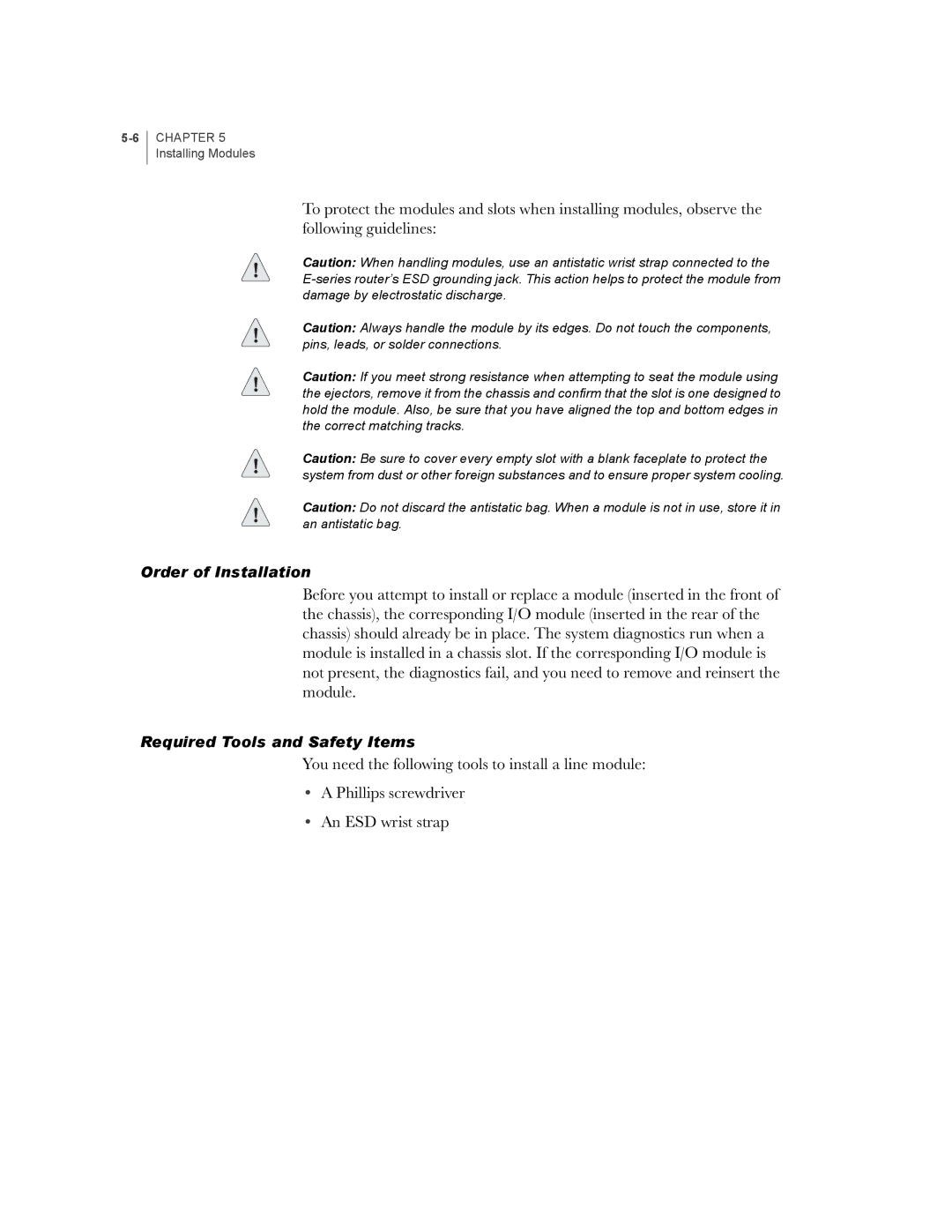
CHAPTER 5 Installing Modules
To protect the modules and slots when installing modules, observe the following guidelines:
Caution: When handling modules, use an antistatic wrist strap connected to the
Caution: Always handle the module by its edges. Do not touch the components, pins, leads, or solder connections.
Caution: If you meet strong resistance when attempting to seat the module using the ejectors, remove it from the chassis and confirm that the slot is one designed to hold the module. Also, be sure that you have aligned the top and bottom edges in the correct matching tracks.
Caution: Be sure to cover every empty slot with a blank faceplate to protect the system from dust or other foreign substances and to ensure proper system cooling.
Caution: Do not discard the antistatic bag. When a module is not in use, store it in an antistatic bag.
Order of Installation
Before you attempt to install or replace a module (inserted in the front of the chassis), the corresponding I/O module (inserted in the rear of the chassis) should already be in place. The system diagnostics run when a module is installed in a chassis slot. If the corresponding I/O module is not present, the diagnostics fail, and you need to remove and reinsert the module.
Required Tools and Safety Items
You need the following tools to install a line module:
•A Phillips screwdriver
•An ESD wrist strap
